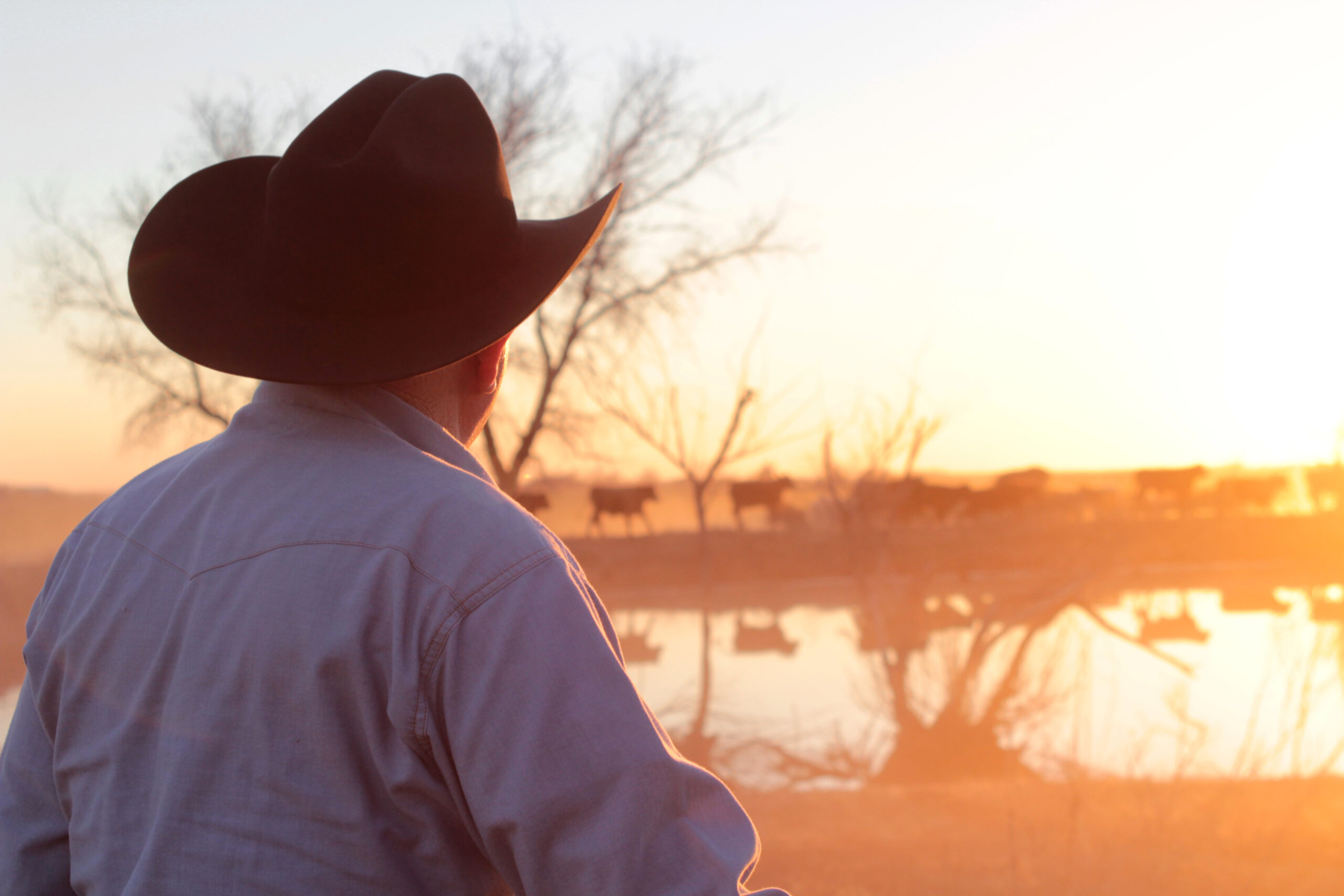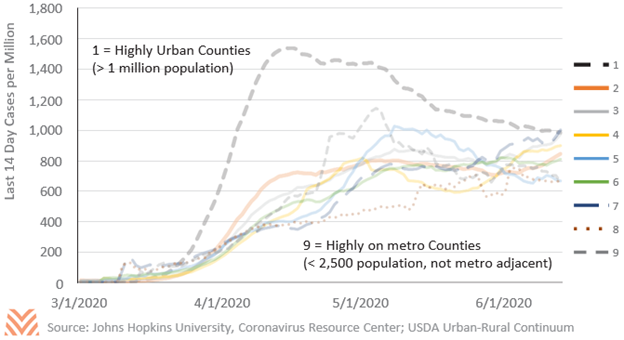COVID-19 Emergence in Rural Communities

Although cases began popping up in the U.S. as early as January 2020, COVID-19 took root in March and April. Urban centers bore the brunt of the early caseloads. New York City averaged more than 3,600 new COVID-19 confirmed cases per day in April. Chicago’s Cook County averaged 1,200 new cases per day in April and May. Active cases per million had an initial national peak on April 16, and on that day, 12 of the top 20 active case counties had 1 million or more in population.
However, by the end of April case rates started to rise in nonmetro counties. Many food processing plants experienced higher percentages of their employees testing positive for COVID-19. Additionally, a rise in confirmed cases in state and federal prisons triggered high case rates across many rural counties. By May 5, 2020, the average new case rate per million in rural counties was no longer statistically lower than that of metro counties. And since mid-May, there is no difference between the two; on average, metro and rural counties are experiencing new case rates at approximately the same level. On June 24, none of the top 20 active case counties had 1 million or more in population; they were all metro-adjacent or rural. In late June, Tyson’s reported significant rounds of positive test results at plants in Missouri and Arkansas, sparking a resurgence in virus spread throughout the meat processing industry.

Active case rates rose rapidly in mid-to-late June in both rural and urban areas. June COVID-19 emergence model projections released by the University of Washington predict a steady rate of new cases throughout the summer. The resurgence of COVID-19 cases is particularly challenging for agricultural operators and farm workers on labor-intensive crops like fruits, melons, and berries. Summer is a critical season for farmworkers for many of these crops, and the close living and commuting conditions these workers experience could heighten virus spread in rural and agricultural areas. Access to protective equipment and reduced staffing will be critical to keeping cases low this summer and fall. Community spread is likely to continue to be pervasive in both metro and nonmetro areas through the fall, and agricultural production centers may see a persistent increase in case rates throughout the harvest. Rural areas without large agricultural or manufacturing labor pools may continue to see lower case rates and community spread.










